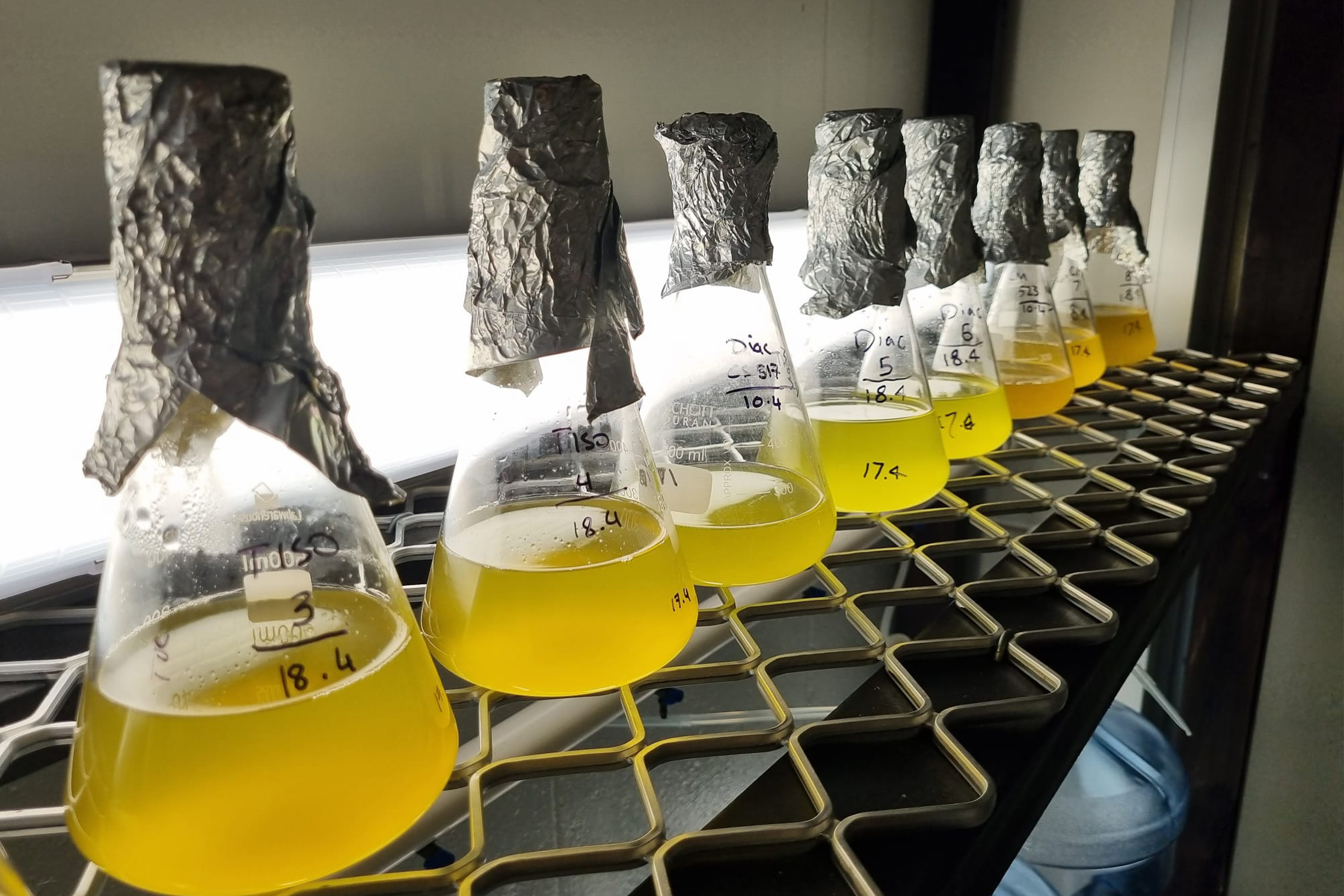Microalgae a major resource

Sobhan Akhavan, Aquaculture Tutor at Te Pūkenga NMIT, says microalgae are crucial for larval nutrition of lots of aquatic animals.
“Microalgae are used as feed for mollusc larvae, echinoderms, and crustaceans, as well as some marine fish larvae, their live prey or shellfish refinement,” he says.
“In other words, a lot of aquatic animals depend on cultured microalgae for production.”
In 2022, Sobhan wrote an application for laboratory scale production of microalgae and was successful, creating an algae lab at the NMIT facility at Cawthron Aquaculture Park (CAP).
NMIT works closely with industry partners and research institutes to provide relevant aquaculture research.
“This lab will address some of our course outlines in both the Sustainable Aquaculture Certificate(external link) and the Bachelor of Aquaculture and Marine Conservation(external link),” says Sobhan.
The Aquaculture team, together with Dan McCall, Operations Manager of Moana NZ oyster hatchery, Cawthron Institute algae team and Spat NZ, were able to upgrade the current facility from a storage room to a proper algae lab facility.
This provides a facility for ākonga and tutors to perform their research on use of microalgae in aquaculture.

